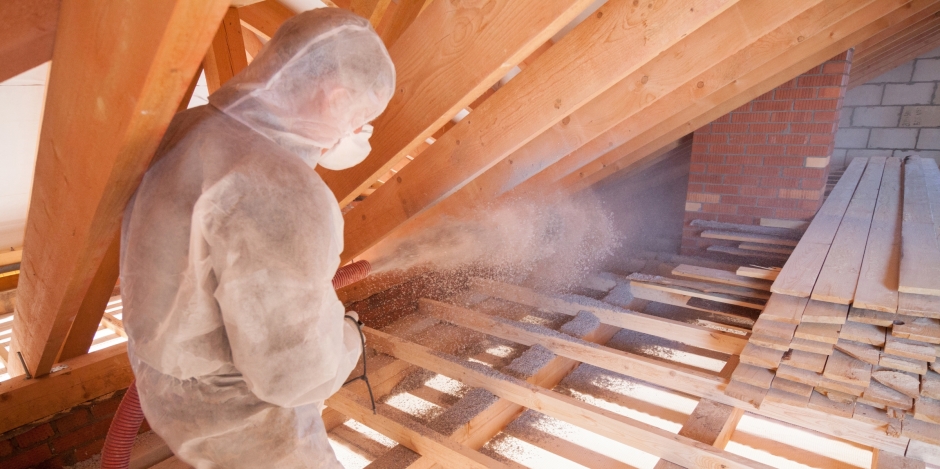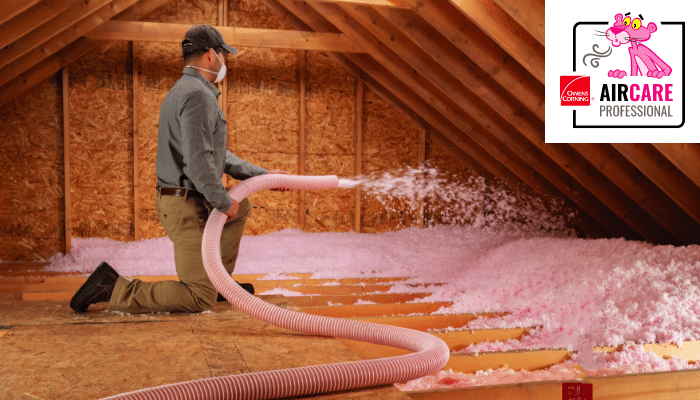Discover the Different Kinds Of Attic Insulation and Their Special Advantages for Your Home's Power Performance

Fiberglass Insulation
Fiberglass insulation is one of one of the most frequently used materials for attic insulation as a result of its outstanding thermal performance and cost-effectiveness. Made up of tiny glass fibers, this material properly traps air, creating an insulating barrier that aids maintain regular indoor temperatures. Its high R-value per inch makes it specifically effective at resisting warmth transfer, which is important for power preservation in homes.
Installment of fiberglass insulation is reasonably simple, frequently available in batts or loose-fill forms, accommodating various attic configurations. Additionally, it is non-combustible and resistant to moisture, decreasing the risk of mold advancement. This sturdiness adds to its long life, making fiberglass a sensible long-term financial investment for home owners.
Additionally, fiberglass insulation is usually produced from recycled products, which boosts its eco-friendliness. The product can additionally contribute to soundproofing, reducing noise transfer in between spaces. While it is important to use safety equipment throughout setup to avoid irritability from the fibers, the general advantages of fiberglass insulation, including power savings and ecological considerations, make it a preferred choice for enhancing attic room efficiency and advertising a comfortable living atmosphere.
Spray Foam Insulation
Spray foam insulation is an extremely reliable option for attic insulation, understood for its premium air sealing and thermal efficiency. This ingenious insulation material is made up of a blend of isocyanate and polyol material, which, when integrated, expands rapidly to fill voids and cavities in the attic space. Its ability to follow numerous surfaces makes sure a continuous barrier against air leakages, substantially reducing warm loss throughout colder months and heat gain throughout warmer seasons.
One of the vital benefits of spray foam insulation is its high R-value per inch, which implies it offers exceptional thermal resistance in a reasonably thin application. This is particularly advantageous in attic rooms where area is commonly limited. Additionally, spray foam can assist lessen wetness build-up, minimizing the threat of mold and mildew and mildew development, which can be damaging to both the structure and indoor air top quality.
While the initial cost of spray foam insulation may be greater than conventional alternatives, its long-term power cost savings, paired with increased comfort and enhanced home worth, make it a rewarding financial investment for property owners seeking boosted power efficiency. Attic Insulation DFW. Overall, spray foam insulation attracts attention as an effective option for maximizing attic insulation
Cellulose Insulation

Cellulose insulation is a prominent choice for attic insulation, mostly composed of recycled paper items treated with fire retardants. This ecologically pleasant alternative is understood for its excellent thermal performance, properly lowering warmth transfer in both summer and winter months. The dense make-up of cellulose enables it to fill up spaces and click resources voids in attic room rooms, supplying a smooth obstacle against air leakages.
Among the substantial advantages of cellulose insulation is its capacity to resist mold and mildew and pests, owing to the fire resistant treatments utilized throughout production. Additionally, it flaunts a high R-value per inch, which converts into remarkable energy efficiency. Home owners can expect lower heating & cooling expenses as an outcome of enhanced insulation.
Installation is usually accomplished via blowing loosened cellulose into the wanted location, permitting a quick and efficient process. This technique also minimizes disturbance to the existing structure. Cellulose insulation has a relatively low ecological impact, as its manufacturing procedure uses recycled materials, adding to sustainable building methods.
Rock Wool Insulation
Among the various options for attic insulation, rock woollen, also referred to as mineral woollen, attracts attention because of its impressive thermal and acoustic performance. Made from natural or recycled products, rock woollen is developed by thawing rock and rotating it into fibers, leading to an item that offers excellent insulation residential or commercial properties.
One of the substantial advantages of rock wool insulation is its high R-value, which shows its performance in resisting warm flow. This characteristic not just enhances power effectiveness however likewise adds to keeping a comfy interior temperature level year-round. Additionally, rock woollen is naturally fire-resistant, making it a much safer choice for homes as it can withstand high temperatures without melting or launching toxic fumes.
In addition, rock woollen insulation succeeds in soundproofing abilities, successfully decreasing noise transmission between rooms and from outdoors sources. In general, rock woollen insulation provides a comprehensive option for enhancing power efficiency, safety and security, and comfort in residential setups.
Glowing Barrier Insulation
Radiant barrier insulation functions as find an effective option for minimizing warm transfer in attics, particularly in warmer environments. This kind of insulation works by showing glowing warmth far from living spaces, consequently decreasing the amount of warmth that enters a home during heat - Attic Insulation DFW. Generally made up of a highly reflective product, such as light weight aluminum foil, radiant visit our website obstacles are set up in attic rooms, facing the roof, where they can obstruct inbound warm from the sunlight
The primary advantage of radiant obstacle insulation is its capability to reduced air conditioning prices. By showing warmth rather than absorbing it, radiant obstacles can assist preserve an extra stable indoor temperature level, reducing the work on air conditioning systems. This efficiency equates into reduced energy costs and increased comfort for home owners.
Along with power financial savings, glowing obstacles can likewise add to boosted indoor air top quality. By lowering warm build-up, they help lessen moisture levels, which can protect against mold development and improve total air flow. When installed appropriately, radiant barrier insulation can be an indispensable addition to any kind of energy-efficient home, making it a worthwhile consideration for house owners looking to improve their attic insulation technique.
Final Thought
In conclusion, comprehending the various types of attic insulation-- fiberglass, spray foam, cellulose, rock wool, and glowing obstacles-- enables house owners to make educated decisions relating to power effectiveness. By picking the proper insulation product, substantial reductions in power prices can be achieved, along with enhancements in interior convenience.

In conclusion, comprehending the various types of attic room insulation-- fiberglass, spray foam, cellulose, rock wool, and glowing obstacles-- allows house owners to make enlightened decisions regarding energy effectiveness.